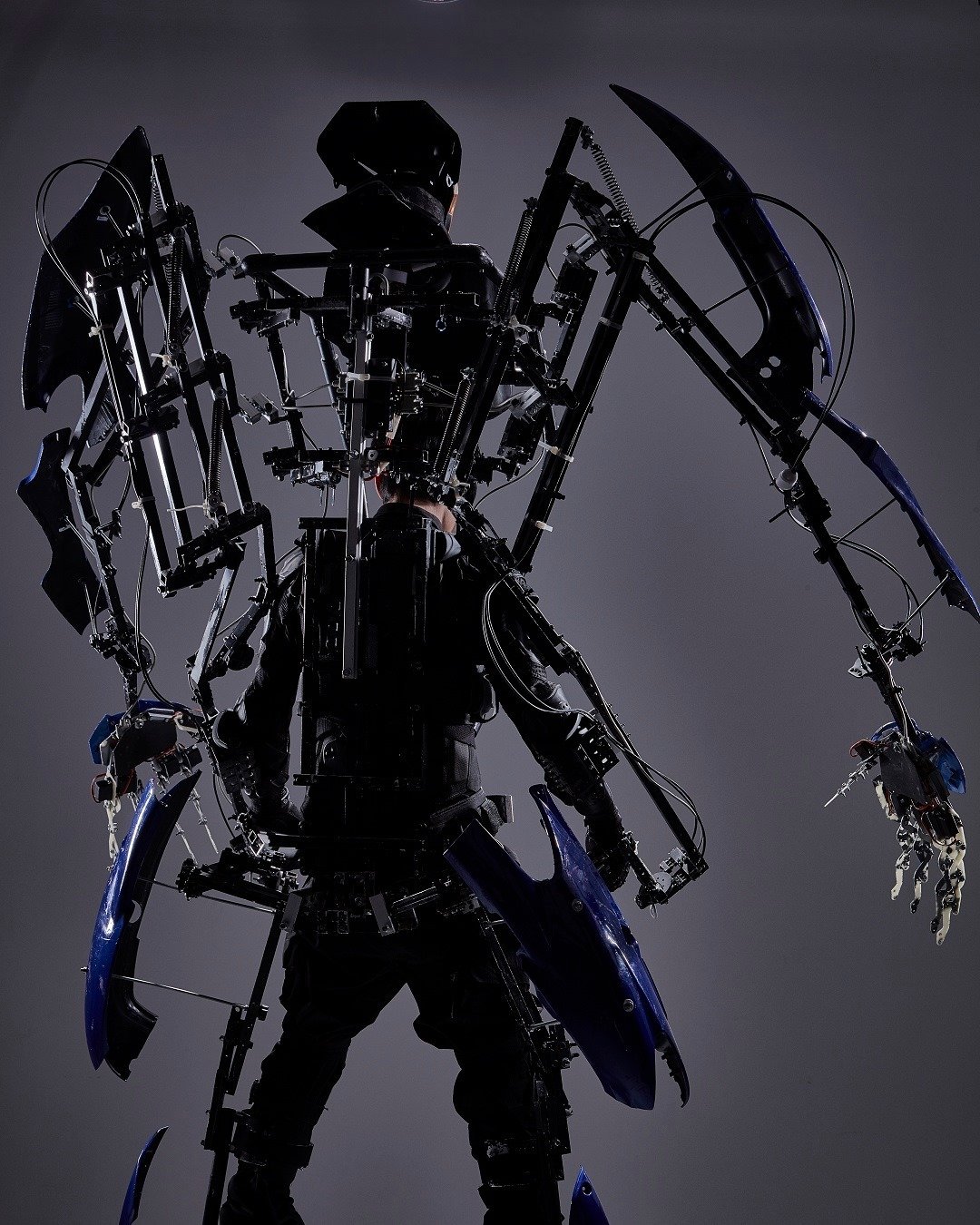Skeletonics
The Skeletonics exoskeleton suit is a remarkable technological wonder, seamlessly integrating mechanics, computing power, and customizable features. By utilizing the capabilities of actuators, sensors, and computer algorithms, it translates the user's movements into amplified strength and fluid motion. Presently showcased at concerts and employed to promote fashion brands, its versatility opens up a myriad of opportunities not only within the creative field but also across diverse industries.
Please, let’s start by introducing Skeletonics.
Skeletonics is an exoskeleton approximately 3 meters tall. A unique link mechanism magnifies the passenger's movements, allowing you to create and experience as if you were a large robot.
On your website we can read “Skeletonics will support the evolution of humankind” and you said you have been inspired by Steve Jobs' analogy of the “bicycle for the mind”. What is your motivation behind working on human augmentation?
I think it is the desire of many people, including us, to become stronger than we are now, or to be able to do things we cannot do, so I am very attracted to creating such mechanisms.
There are various approaches depending on the type of robot, but the exoskeleton robot we are working on removes the physical limitations of humans by directly supporting physical abilities, making it possible to do things that were previously impossible.
In which context Skeletonics has been showcased so far and how it has been perceived so far, inside Japan VS outside - if you brought it outside Japan?
It has been introduced as a robot that looks like it came out of a movie or anime. Overseas, it has been used to stage concerts and promote fashion brands.
Skeletonics is a project very much oriented towards hardware (Skeletonics is not powered by electricity, but instead it moves thanks to patented technology that relies on the kinetic energy of the wearer’s movement n.d.r.). In the field of human augmentation, in which direction do you think artificial intelligence is going, and do you see Skeletonics integrating artificial intelligence / machine learning into its products?
By equipping it with high-performance AI and actuators, Skeletonics has the potential to evolve into autonomous collaborative robots. We believe that this will enable humans to operate under conditions that are physically impossible, leading to the expansion of civilization. However, since we want to create a device that expands the human body, we are not currently researching self-reliance through AI.
What has been the process in building the robots? From the initial idea in 2010 to the latest iteration of the product.
The robot we created in the 2008 robot contest was a dinosaur-shaped bipedal robot. It occurred to me that if we applied this technology, we could create a robot that would make people bigger, and in 2010, the three winning members of the robot contest completed the first model in six months.
It took a lot of man-hours and time to get used to the first model, and it was heavy and placed a heavy burden on the pilot, making it impossible to operate it for long periods of time.
The latest model we have today is the one we have achieved by resolving this issue.
What’s the future looks like for the Skeletonics project? In which direction are you currently experimenting?
Currently, we are developing robots that are large and cool, specializing in entertainment; but in the future we would like to develop robots that can be useful in the real world by expanding their physical functions, such as increasing their power.
How do you personally feel like while wearing the robot? And why people should try Skeletonics?
You can feel like you are a big robot. Although it is not practical at the moment, it is simply a cool and fun vehicle, so I would like you to experience it. By equipping it with high-performance AI and actuators, Skeletonics has the potential to evolve into autonomous collaborative robots. We believe that this will enable humans to operate under conditions that are physically impossible, leading to the expansion of civilization. However, since we want to create a device that expands the human body, we are not currently researching self-reliance through AI.
SKELETONICS
interview FILIPPO ROSATI
What to read next


















